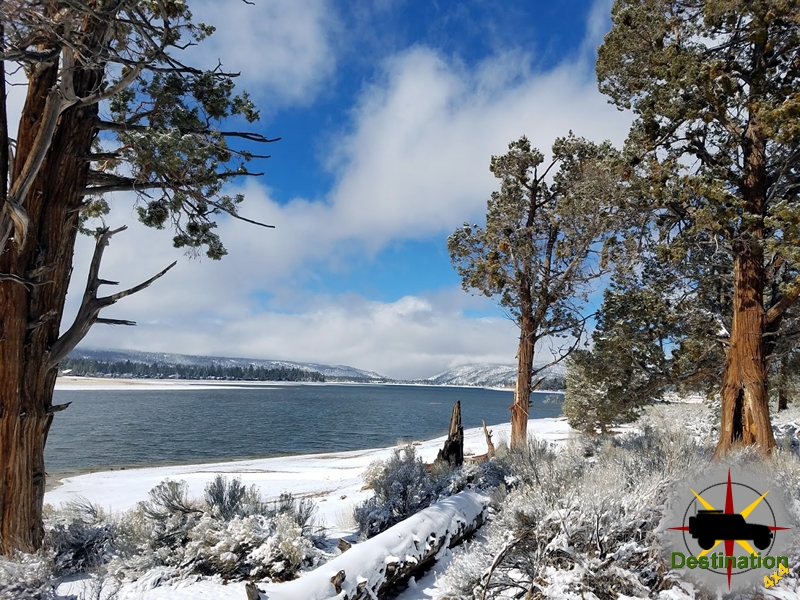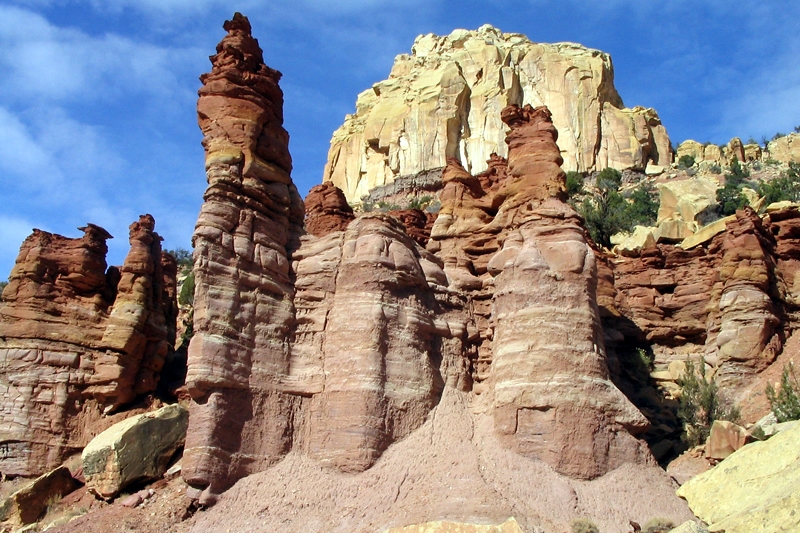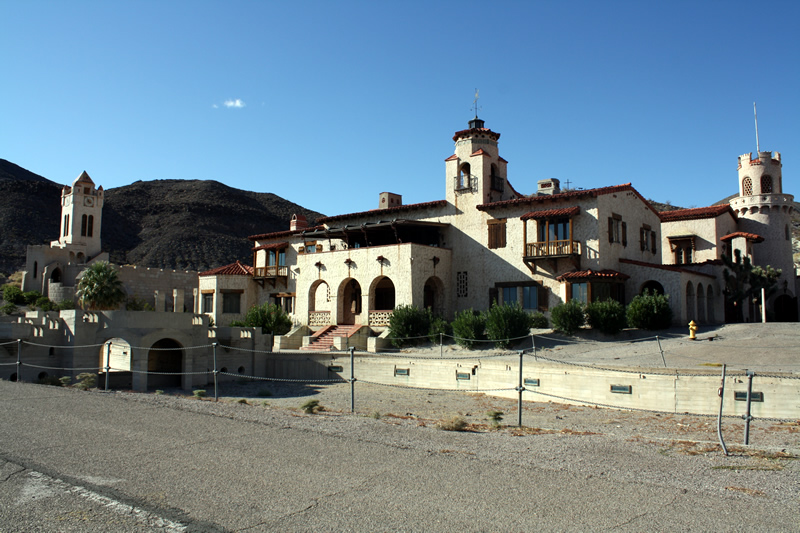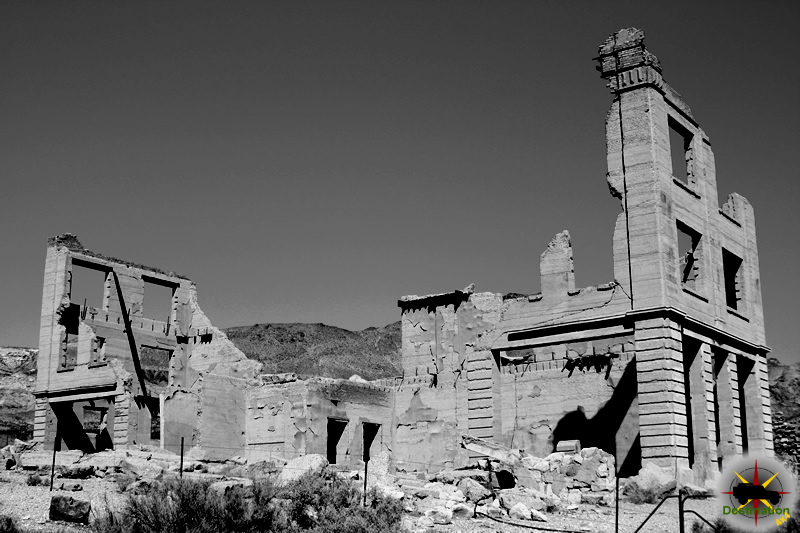
Schellbourne Nevada – Nevada State Historic Marker
Schellbourne, located in the Schell Creek Range in White Pine County, Nevada, approximately 43 miles north of Ely, is a well-preserved ghost town with a rich history tied to the Shoshone people, the Pony Express, military outposts, and a brief but vibrant mining era. Once a bustling hub along the Central Overland Route and the original Lincoln Highway, Schellbourne’s historical significance is marked by Nevada Historical Marker No. 51 and its listing on the National Register of Historic Places in 1972, with boundaries expanded in 1977. This report explores Schellbourne’s evolution from a Native American village to a key stopover in the American West and its eventual decline into a ghost town.
Prehistoric and Native American Roots
Long before European settlers arrived, the Schellbourne area was a Shoshone village site, with the Kusiutta (Goshute) people living in harmony with the harsh Great Basin environment. The Goshute relied on resources like pinyon pine nuts, thriving despite the arid desert and extreme temperatures. Their presence in the region predates recorded history, and their cultural connection to the land persisted through centuries of change. The arrival of trappers and explorers in 1827 disrupted Goshute life, restricting access to traditional hunting and gathering sites and sparking tensions that culminated in a treaty in 1863, establishing reservations for the Skull Valley and Deep Creek Goshute bands.
Early Exploration and the Overland Routes (1859–1861)
In 1859, Captain James Simpson scouted Schellbourne as part of an effort to find a shorter route across the Great Basin. That same year, an Overland Stage and Mail station was established, marking the beginning of Schellbourne’s role as a critical stopover. Named Schell Creek Station, it served George Chorpenning’s Jackass Mail and later became a Pony Express station in 1860. The Pony Express, operational for only 18 months, relied on Schellbourne for mail delivery and stock exchange, with riders like Elijah Nichols “Uncle Nick” Wilson braving dangers such as Paiute raids. In June 1860, after a raid killed the stationmaster and two attendants, the U.S. Army established a small military post, later named Fort Schellbourne after Major A.J. Schell, to protect the stage and mail lines from conflicts with the Newe (Goshute and Western Shoshone) people. The Overland Telegraph arrived in 1861, further cementing Schellbourne’s role as a communication hub. The fort was abandoned in 1862 as tensions with local tribes subsided, and the Overland Stage ceased operations in 1869 after the Central Pacific Railroad’s completion to the north.
The Mining Boom and Bust (1871–1885)
In 1871, prospector James McMahon discovered silver ore in the mountains east of Schellbourne, leading to the creation of the Aurum Mining District. The town, officially named Schellbourne, grew rapidly, boasting a population of over 500 by 1872. The community featured four or five saloons, a Wells Fargo office with heavy steel doors, two law offices, a livery stable, two boarding houses, two restaurants, three stores, and a five-stamp mill. The Schell Creek Prospect newspaper published its first edition in July 1872 but folded within seven months, reflecting the town’s fleeting prosperity. At its peak, nearly 400 residents lived around the old Pony Express station. However, richer silver deposits discovered in nearby Cherry Creek in late 1872 triggered a mass exodus, with mining equipment and buildings relocated across Steptoe Valley. By 1885, the ore was largely depleted, and Schellbourne’s population dwindled to around 50, effectively ending its mining era.
Transition to Ranching and Modern Preservation
After the mining bust, “Uncle Billy” and Eliza Burke acquired the Aurum Mining District and adjacent valley, transforming Schellbourne into a ranch headquarters. The Schellbourne post office, operational from December 1871 to October 1925, served the ranching community. Today, Schellbourne operates as a private ranch, with some original buildings preserved, though many have been razed, to the dismay of local historians. A small cemetery, protected under the Recreation and Public Purposes Act, remains near the ruins. The Schellbourne Rest Area on U.S. Highway 93, located four miles west of the original townsite, features interpretive panels and a silhouette of a Pony Express rider, providing visitors with historical context.
Legacy and Historical Significance
Schellbourne’s multifaceted history encapsulates the dynamic changes of the American West in the 19th century. From a Shoshone village to a Pony Express and military outpost, a booming mining camp, and finally a ranching hub, it reflects the region’s economic and cultural shifts. Its designation as Nevada Historical Marker No. 51 and inclusion on the National Register of Historic Places underscore its importance. The site’s connection to the Goshute people, the Pony Express National Historic Trail, and the Lincoln Highway highlights its role as a crossroads of Native American heritage, westward expansion, and early American infrastructure.
Conclusion
Schellbourne, Nevada, stands as a testament to the transient nature of frontier towns, shaped by Native American resilience, the rapid pace of the Pony Express, military protection, and the boom-and-bust cycle of mining. Though now a quiet ghost town on private land, its historical markers and preserved remnants ensure its story endures. Visitors to the Schellbourne Rest Area can glimpse this legacy, connecting the past to the present in the remote Schell Creek Range.
Nevada State Historic Marker 51
Nevada State Historical Markers identify significant places of interest in Nevada’s history. The Nevada State Legislature started the program in 1967 to bring the state’s heritage to the public’s attention with on-site markers. These roadside markers bring attention to the places, people, and events that make up Nevada’s heritage. They are as diverse as the counties they are located within and range from the typical mining boom and bust town to the largest and most accessible petroglyph sites in Northern Nevada Budget cuts to the program caused the program to become dormant in 2009. Many of the markers are lost or damaged.
Most of the markers across the state are large blue metal markers. However, there are a variety of other marker styles out there. For this guide they have been simplified into a few categories (blue, blue small, concrete, and stone). Sometimes, the markers are on buildings, fences, or metal stands.
Schellbourne was a mail station and town, located approximately four miles east of this marker in Stage Canyon, nestled in the Schell Creek mountain range. The Pony Express established a mail station and corral there in 1860, providing mail service to the region until 1861, when the Overland Stage company took over the route. A small military post known as Fort Schellbourne joined the station until 1862, protecting the stage line during the conflicts between whites and the Newe (Goshute and Western Shoshone) Indians.
Prospectors discovered silver ore in the mountains immediately to the east of Schellbourne in the early 1870s, and created the Aurum Mining District in 1871. An active mining camp developed with a population of over 500 people. By 1885, the ore had been mostly depleted, with other mining towns like Cherry Creek drawing residents away. The district and adjacent valley were acquired by Uncle Billy” and Eliza Burke as a ranch and hotel. Schellbourne has subsequently operated as the headquarters for various ranches since that time.
STATE HISTORICAL MARKER No. 51
STATE HISTORIC PRESERVATION OFFICE
WHITE PINE PUBLIC MUSEUM INC.
Nevada State Historic Marker Map
Summary
| Name | Schellbourne |
| Location | White Pine County, Nevada |
| Latitude, Longitude | 39.7969, -114.7419 |
| Nevada State Historic Marker | 51 |
Sources
- Nomadic Niko. (2023). Schellbourne, Nevada (Rest Area on US Highway 93).
- Nevada State Historic Preservation Office. Schellbourne.
- Historical Marker Database. Schellbourne.
- HistoryNet. (2018). Ghost Towns: Schellbourne, Nevada.
- White Pine County NVGenWeb. Schellbourne Nevada History and Photos.
- Historical Marker Database. Schellbourne: Gateway to the Goshute Nation.
- The USGenWeb Project. Schellbourne Nevada History.
- GhostTowns.com. Schellbourne – Nevada Ghost Town.
- Great Basin Heritage Area. Schellbourne Station, Nevada.
- NoeHill Travels in Nevada. National Register #72000768: Fort Schellbourne, Nevada.
- FortWiki. (2022). Fort Schellbourne.
- YouTube. (2024). Fascinating Story of Schellbourne Nevada: Pony Express, Frontier Fort, Ghost Town, Mining Town.
Pershing County – Nevada State Historic Marker 17

Pershing County, located in north-central Nevada, is a rural county with a population of approximately 6,192 as of 2025, making it the 11th largest county in the state. Covering 6,067 square miles, it is characterized by vast open spaces, with 6,037 square miles of land and only 0.5% water. The county seat is Lovelock, named after early settler George Lovelock, and the county itself is named for General John J. Pershing, a World War I hero. Established on March 18, 1919, as Nevada’s last county, it was carved from Humboldt County.
The county’s landscape includes the prominent Star Peak, the tallest mountain at 9,840 feet, and part of the Black Rock Desert, famous for hosting the Burning Man festival. Historically, Pershing County was a key stop on the Humboldt Trail, known as Big Meadows, where 19th-century emigrants rested before crossing the Forty Mile Desert. Mining, dating back to the 1850s, and cattle ranching remain economic staples, with modern agriculture focusing on alfalfa and wheat production.
Demographically, the 2020 census reported a racial makeup of 77.69% White, 5.35% Black, 3.42% Native American, 0.63% Asian, 0.22% Pacific Islander, 9.38% other races, and 3.30% multiracial, with 19.33% of residents identifying as Hispanic or Latino. The median household income is $72,007, with a per capita income of $42,694 and a poverty rate of 8.05%. Housing is sparse, with 2,389 units at a density of 0.39 per square mile, and most residents own their homes.
Politically, Pershing County leans heavily Republican, with the last Democratic presidential candidate to win it being Lyndon Johnson in 1964. The county has a low incidence of natural disasters compared to the U.S. average, though it experiences significant earthquake activity. Public schools are above average, and the county supports a conservative community lifestyle. Key locations include Lovelock, the largest city, and smaller communities like Imlay and ghost towns such as Seven Troughs, tied to early 20th-century gold mining.
Nevada State Historic Marker 17
Nevada State Historical Markers identify significant places of interest in Nevada’s history. The Nevada State Legislature started the program in 1967 to bring the state’s heritage to the public’s attention with on-site markers. These roadside markers bring attention to the places, people, and events that make up Nevada’s heritage. They are as diverse as the counties they are located within and range from the typical mining boom and bust town to the largest and most accessible petroglyph sites in Northern Nevada Budget cuts to the program caused the program to become dormant in 2009. Many of the markers are lost or damaged.
Pershing County 1964
Here was a key point on Nevada’s earliest road, the famed Humboldt Trail that brought 165,000 emigrants west in the 1840’s and 50’s. Travelers named this rich valley The Big Meadows and stopped for water and grass before continuing south to cross the dreaded 40-Mile Desert, the most difficult lap on the trail to California.
Mining, still an important industry, began here in 1850’s. George Lovelock, merchant, rancher and prospector, gave his name to the county seat. The coming of the railroad in 1869 brought new growth to the area. Pershing County, established in 1919, was previously part of Humboldt County.
Nevada Centennial Marker No. 17
Nevada State Historic Marker 17 Map
Nevada State Historic Marker Summary
| Name | Pershing County |
| Location | Pershing County, Nevada |
| Latitude, Longitude | 40.1803, -118.4769 |
| Nevada State Historic Marker | 17 |
Mineral County – Nevada State Historic Marker 16

Mineral County, Nevada, located in the west-central part of the state along the California border, is a sparsely populated region with a population of 4,554 as of the 2020 census, making it Nevada’s fifth-least populous county. Established in 1911 from Esmeralda County, it derives its name from the region’s rich mineralization, part of the Walker Lane Structural Belt, known for producing gold, silver, and copper. The county seat, Hawthorne, dubbed “America’s Patriotic Home,” is marked by its red, white, and blue streets and strong community pride, partly due to the Hawthorne Army Depot, the world’s largest ammunition storage facility, spanning over 147,000 acres. The county covers 3,813 square miles, with 1.6% water, including Walker Lake, a remnant of the prehistoric Glacial Lake Lahontan, fed by the Walker River. Surrounded by arid mountains like the Wassuk Range and Excelsior Mountains, with Mount Grant as the highest point at 11,285 feet, the area enjoys mild temperatures and nearly year-round sunshine, ideal for outdoor activities.
Mineral County has no incorporated communities and features a low population density of 1.3 people per square mile. The economy, employing about 1,580 people, is driven by public administration, education, and manufacturing, with mining remaining a key industry. The median household income is approximately $35,446, with a per capita income of $23,226, and about 19.1% of the population lives below the poverty line. The racial makeup is 72.5% white, 15.5% Native American, 4.1% Black, 1.1% Asian, and 9.1% Hispanic or Latino. The county offers over 1,000 miles of unfenced trails for OHV and ATV enthusiasts, and attractions like the Hawthorne Ordnance Museum and Mineral County Museum, which showcases mining history and artifacts. Politically, the county has trended Republican since the Reagan era, with a notable Democratic win by Bill Clinton in 1992. Visitors can explore historic mining towns like Aurora, Candelaria, and Rawhide, alongside natural beauty and recreational opportunities at Walker Lake State Recreation Area
Nevada State Historic Marker 16
Nevada State Historical Markers identify significant places of interest in Nevada’s history. The Nevada State Legislature started the program in 1967 to bring the state’s heritage to the public’s attention with on-site markers. These roadside markers bring attention to the places, people, and events that make up Nevada’s heritage. They are as diverse as the counties they are located within and range from the typical mining boom and bust town to the largest and most accessible petroglyph sites in Northern Nevada Budget cuts to the program caused the program to become dormant in 2009. Many of the markers are lost or damaged.
Marker Text
Nevada’s earliest maps show Walker Lake. Jedediah Smith, the first American into Nevada, passed near here in 1828 during his remarkable trip across the state. Peter Skene Ogden was here in 1829, then Fremont in 1845 with his guide, Joseph Walker for whom the lake is named.
Until it’s creation in 1911, Mineral County was part of Esmeralda. The first county seat was at Aurora but it was moved to Hawthorne in 1883, the year after the Carson and Colorado RR was built. The county had many well-known mining towns—Aurora, Bellville, Candelaria, Rawhide and others.
Nevada State Historic Marker Map
Nevada State Historic Marker Summary
| Name | Mineral County |
| Location | Mineral County, Nevada |
| Latitude, Longitude | 38.6839, -118.7726 |
| Nevada State Historic Marker | 16 |
References
Los Angeles Daily Herald – December 30, 1882

The Los Angles Daily Herald reported on the assassination attempt on Virgil Earp, a key figure in the law enforcement of the Old West, occurred on December 28, 1881, in Tombstone, Arizona Territory. This event was part of the larger conflict known as the Earp-Cowboy feud, which culminated in the infamous Gunfight at the O.K. Corral.
Background

Virgil Earp, along with his brothers Wyatt and Morgan, was heavily involved in law enforcement in Tombstone. The town, at the time, was a hotbed of tension between the Earps and the Cowboys, a loosely organized group of outlaws and rustlers. The Gunfight at the O.K. Corral on October 26, 1881, where Virgil played a leading role as Tombstone’s town marshal, escalated these tensions. In this shootout, three Cowboys—Tom McLaury, Frank McLaury, and Billy Clanton—were killed, while Virgil and his brothers emerged relatively unscathed. This event intensified the animosity between the Earps and their enemies.
The following is the newspaper account printed in the Los Angeles Daily Herald on December 30, 1882

Lawlessness at Tombstone Condition of Marshal Earp
Tombstone, Dec. 29th. The condition of United States Deputy Virgil Earp is Critical. The surgeons this afternoon took out the fractured bone in the arm above the elbow. The shot that penetrated the back above the left hip, passed through the body and lodged near the point of the hip, above the groin. The Doctor says that there are four chances in five that he will die. The local authorities are doing nothing to capture the assassins as far as it known. A telegram has been sent to the United States Marshall Dake, at Prescott, of the state of affairs here. Judge Spicer, Marshall Williams, Wyatt Earp, Rickabough and others are in momentary danger of assassination.
This morning a crank named Reilly started down Allen Street with a Winchester rifle in his hands, which caused great excitement. The officers arrested him without damage. The same man tried to jump down the Fiora Morrison shaft a week ago, but was prevented by men in the mine. His condition is said to be the effect of hard drink.
References
American Robin ( Turdus migratorius )
The American Robin (Turdus migratorius), a member of the thrush family is a migratory songbird commonly found across North America. Recognized for its bright orange-red breast, this species is a member of the thrush family, Turdidae. It is often considered a harbinger of spring due to its early arrival from migration and its prominent presence in backyards and gardens.

Physical Description
The American Robin measures about 9-11 inches (23-28 cm) in length with a wingspan of 12-16 inches (31-41 cm). Adults display a striking coloration: a reddish-orange breast, a dark gray to black head, back, wings, and tail, and a white lower belly and undertail. Their bill is yellow with a slight curve, and their eyes are surrounded by white rings, giving them a distinctive appearance.
Habitat and Distribution

American Robins are highly adaptable birds that inhabit a wide range of environments. They are found in woodlands, farmlands, urban areas, and suburban gardens. Their distribution extends from the northern parts of Canada to Central America. During breeding season, they prefer habitats with abundant trees and shrubs, while in the winter, they may flock to areas with ample fruit-bearing trees.
Behavior and Diet
American Robins are known for their characteristic behaviors, such as running and stopping on lawns while foraging for food. Their diet is omnivorous, consisting mainly of insects, earthworms, and fruits. In the spring and summer, they predominantly feed on invertebrates, switching to a fruit-heavy diet in the fall and winter. Robins play a significant role in controlling insect populations and seed dispersal.
Reproduction
Breeding season for American Robins starts in early spring and can continue through late summer. They typically have two to three broods per year. Nests are built by the female using grass, twigs, and mud, and are often located in trees, shrubs, or on man-made structures. The female lays 3-5 blue eggs, which she incubates for about two weeks. Both parents are involved in feeding the nestlings, which fledge approximately two weeks after hatching.
Migration
American Robins are partial migrants. Northern populations migrate southward in the fall to escape harsh winter conditions, while southern populations tend to be more sedentary. Migration patterns are influenced by food availability and weather conditions. Robins migrate in flocks and can travel considerable distances, often returning to the same breeding grounds each year.
Vocalization
The American Robin is known for its melodious song, which consists of a series of clear whistles and phrases. Their song is often described as “cheerily, cheer up, cheer up, cheerily, cheer up.” Males sing to establish and defend their territories and to attract mates. Robins are also known for their “tut-tut-tut” alarm calls when threatened.
Conservation Status
The American Robin is currently listed as a species of Least Concern by the International Union for Conservation of Nature (IUCN). Their population is stable and widespread, benefitting from their adaptability to human-modified environments. However, they face threats from pesticide use, habitat loss, and window collisions.
Cultural Significance
American Robins hold a significant place in North American culture, often symbolizing renewal and the arrival of spring. They appear in various folklore and literature, celebrated for their vibrant appearance and cheerful song. The robin is also the state bird of Connecticut, Michigan, and Wisconsin, reflecting its widespread recognition and admiration.
The American Robin is a resilient and versatile bird that plays an important role in ecosystems across North America. Its striking appearance, melodious song, and adaptability have made it a beloved bird among birdwatchers and the general public. Ongoing conservation efforts ensure that this iconic species continues to thrive in its natural habitats.



